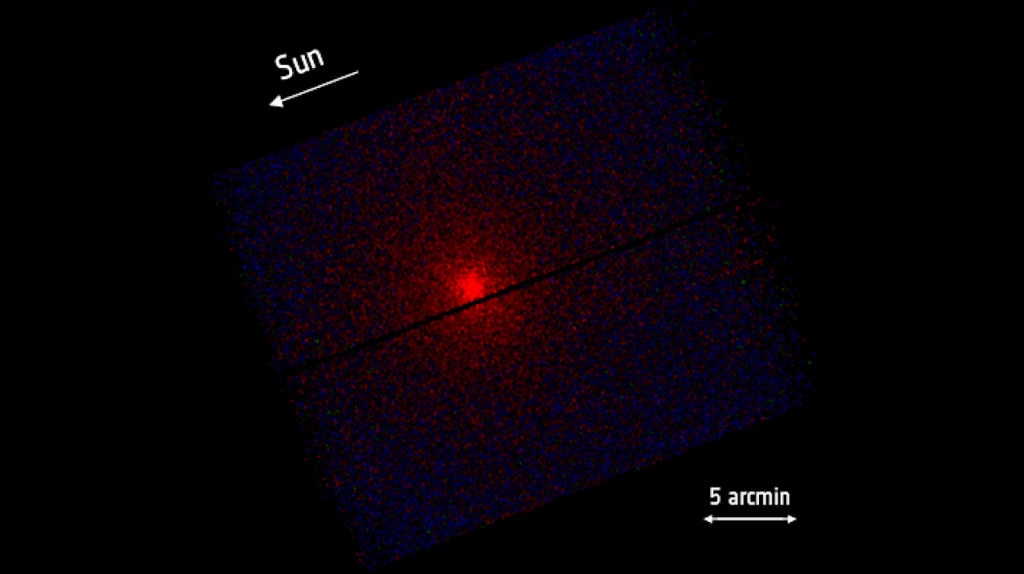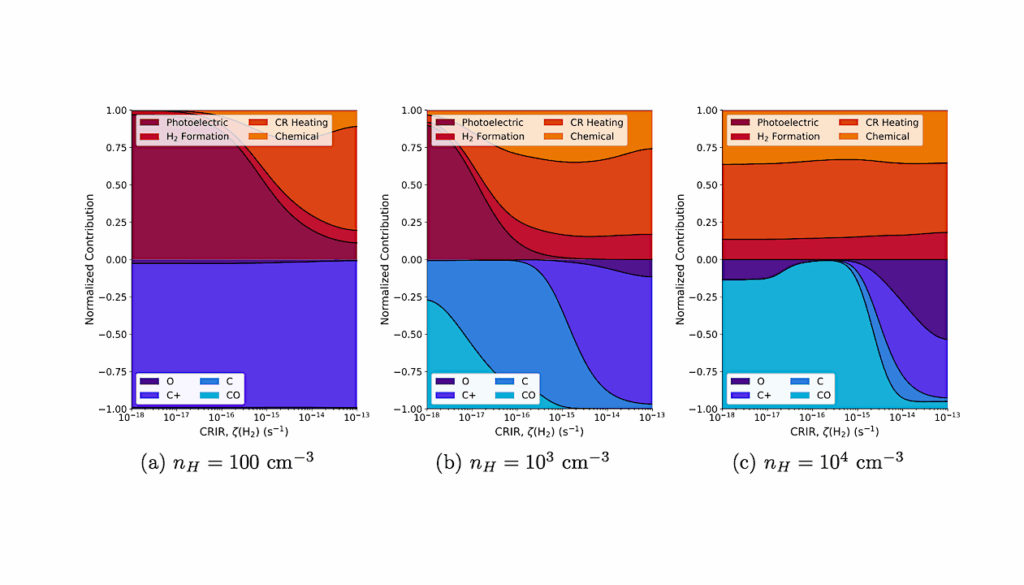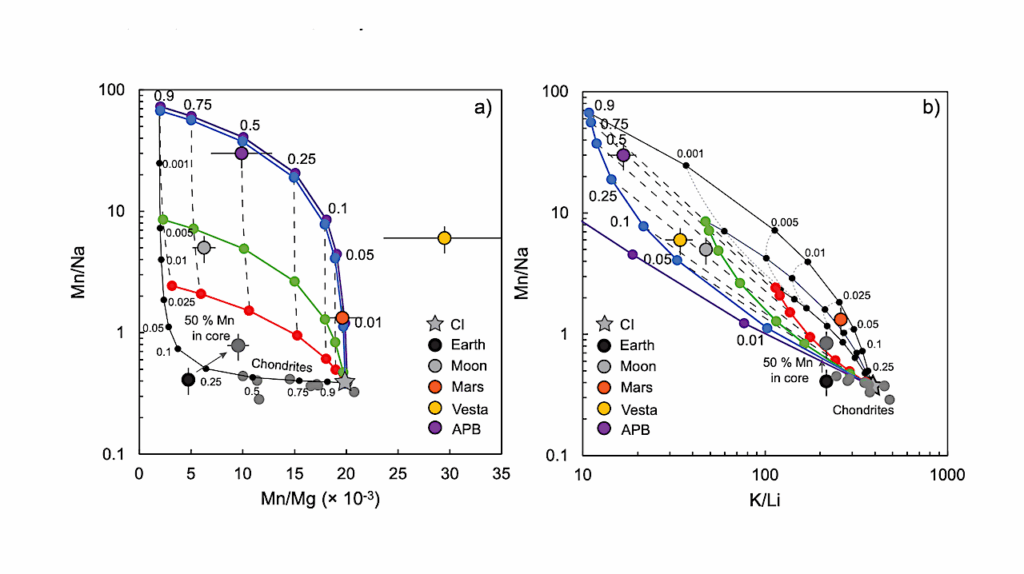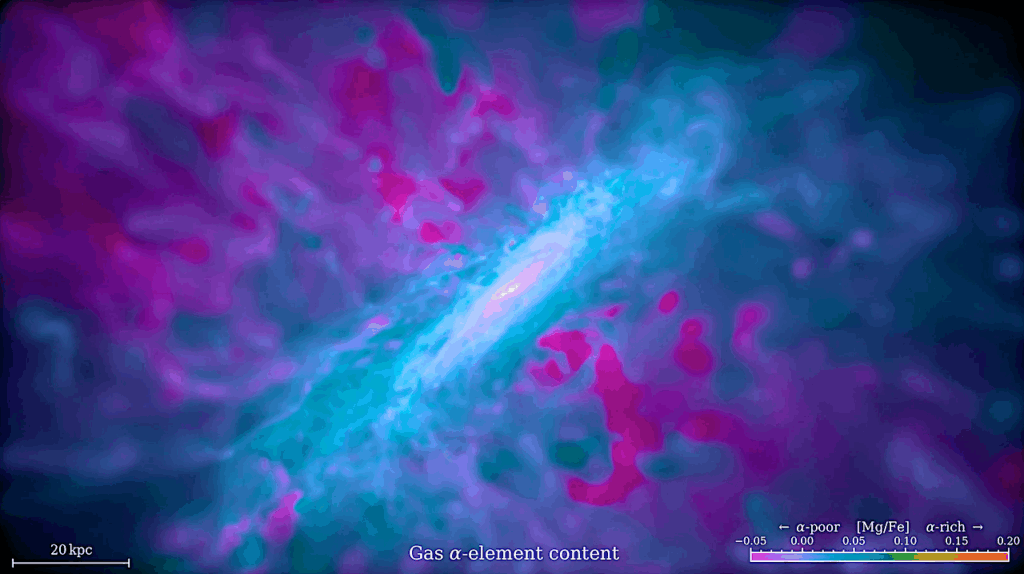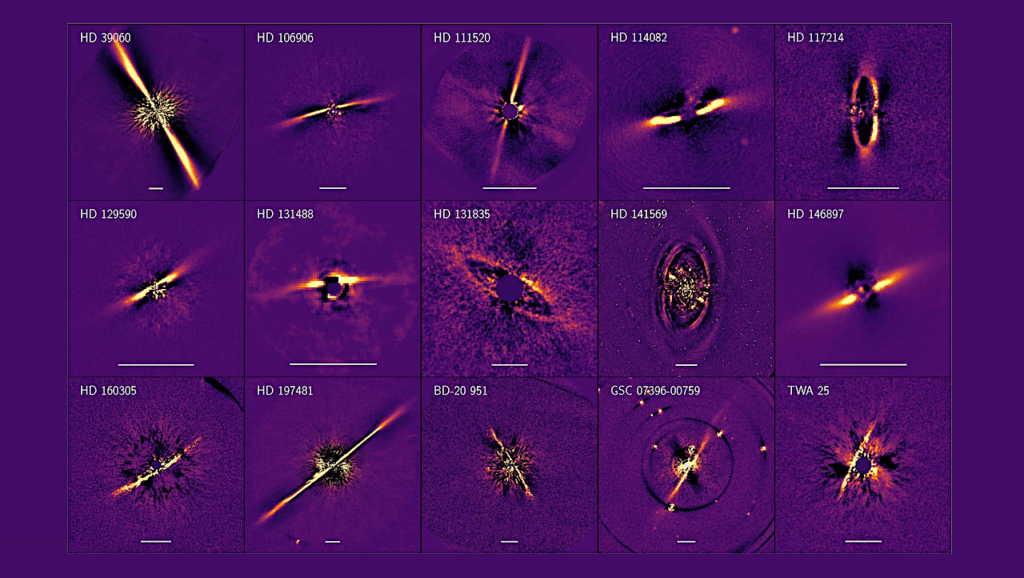ALMA Detects First-Ever Hydrogen Recombination Lines From Proplyd Disks in Densely Packed Orion Nebula Cluster

Most stars form in clusters, where hundreds to thousands of stars coevolve in proximal environmental conditions that dictate how planetary systems might develop.
Nearby massive stars can also contribute intense ionizing radiation, adding external dynamics that form a shell of ionized gas around a protoplanetary disk and emit unique hydrogen recombination spectral lines.
Now, a team of astronomers has used archived Atacama Large Millimeter/submillimeter Array (ALMA) observations to identify for the first time the characteristic radio recombination lines associated with these ionized shells surrounding Solar System-sized proplyd disks in the Orion Nebula Cluster, at a distance of 1000 light-years from Earth. (Discovery of Radio Recombination Lines from Proplyds in the Orion Nebula Cluster, The Astrophysical Journal)
ALMA, of which the U.S. National Science Foundation National Radio Astronomy Observatory (NSF NRAO) is a partner, has long been used to identify recombination lines from large astrophysical objects, and to study various features of protoplanetary disks.
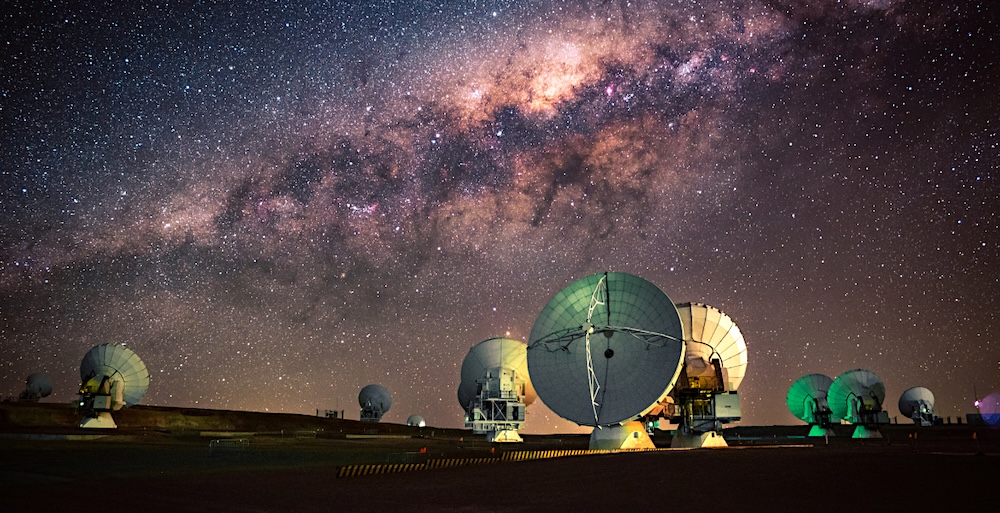
The Milky Way Galaxy stretches over ALMA and the Chajnantor plateau of the Chilean Andes. The Large and Small Magellanic Clouds can also be seen in this panorama that was stitched together from multiple photos. Credit: NSF/ AUI/ NSF NRAO/ B.Foott
Now, a team of astronomers led by Ryan Boyden of the University of Virginia has discovered that ALMA’s state-of-the-art interferometers are powerful enough to detect the specific radio-wavelength hydrogen recombination lines of individual proplyd disks even in dense stellar clusters. Boyden says happily, “This discovery was serendipitous, and sometimes those are the most exciting science projects to work on—coming across a new finding somewhat by accident.”
Whereas a protoplanetary disk is defined as the disk of dust and gas around a young star, a proplyd carries the added distinction that the disk is being ionized by strong radiation from nearby, external massive stars. Thus, beyond the disk itself, a cocoon-like shell of ionized gas surrounds the system. The energetic boundary of this shell appears almost comet-like as the neighboring star drives photoevaporation across the disk, signaling to astronomers that these proplyd disks evolve quite differently.
Boyden and his team used data from prior ALMA observations to probe the ionized gas surrounding 200 protoplanetary disks around stars in the Orion Nebula Cluster. Of these, 17 proplyd disks were uniquely identified by a very particular hydrogen recombination line.
Although ionized hydrogen is common in energetic environments such as these star-forming regions, Boyden and his team searched for the specific energy signature released when a free electron combines with a hydrogen ion and “falls” from hydrogen’s 42nd energy level to its 41st. That fall, called the H41𝛼 recombination line, is distinctly recognizable within the 3.1-mm radio wavelengths observed by ALMA.
“Lines at longer or shorter wavelengths will each tell us something different about the ionized gas shell,” Boyden explains. “H41𝛼 is the line that we are fortunate to already have in our observations. It’s the sweet spot of telling us the temperature and density of the ionized gas very accurately, and also being a lucky match to ALMA’s sensitivity.”
“ALMA is the most powerful array of radio telescopes in the world, at the best angular resolution, and it’s uniquely sensitive at these wavelengths to find the H41𝛼 lines. That’s what ALMA is really good at doing, and doing it efficiently,” Boyden says. Embedded within this spectral line data, Boyden and his team used the hydrogen recombination line flux to calculate an average temperature of 6000 – 10,000 K across the shells.
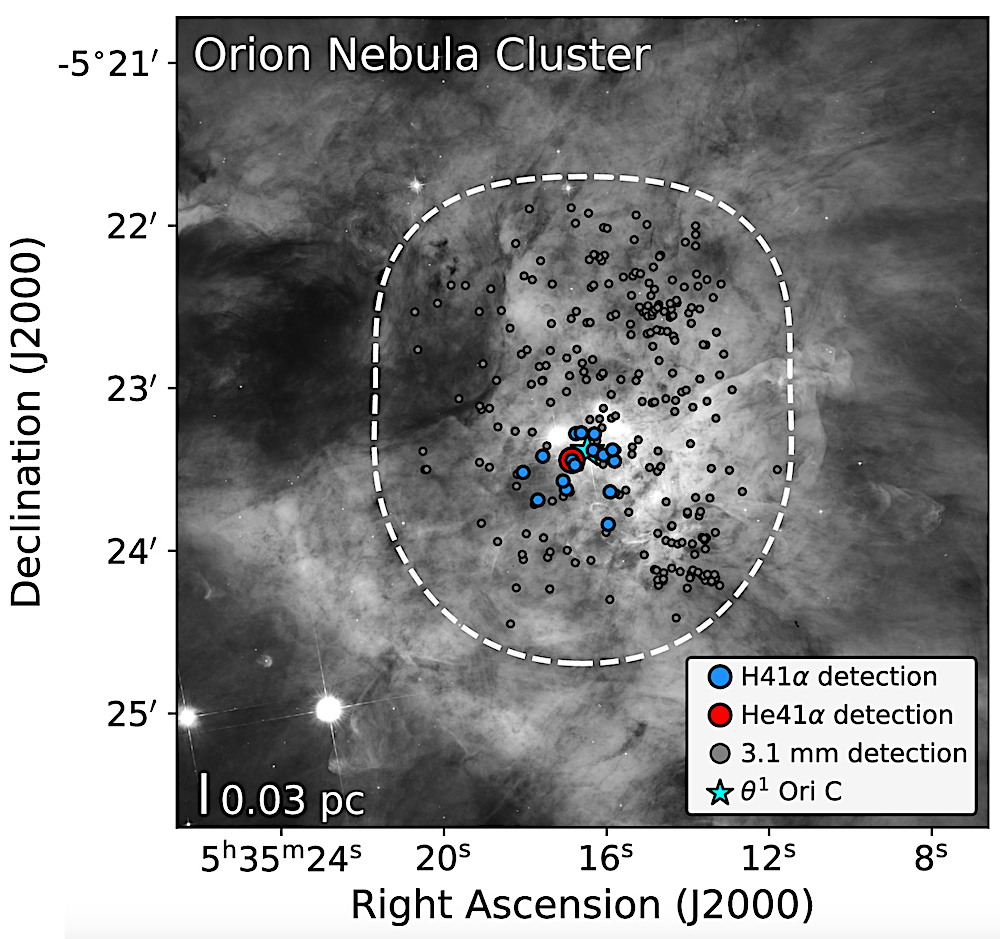
The Orion Nebula Cluster, as seen with HST/Advanced Camera for Surveys (L. Ricci et al. 2008). The white dashed line depicts the field of view of our 3.1 mm ALMA mosaic. Blue circles indicate proplyds detected in H41α. The red circle marks the proplyd that is also detected in He41α. Gray circles indicate the positions of 3.1 mm continuum detections that are not detected in H41α or He41α. The cyan star indicates the position of the ionizing source θ1 Ori C. — The Astrophysical Journal
“They’re quite warm. And this is now one of our most accurate measurements of temperature for that ionized gas,” Boyden says. In addition, the spectral line width reveals a trove of kinematic information about the disk, as the spread can indicate Doppler effect motions pushing the light to longer or shorter wavelengths. Added Boyden, “We studied the width of those recombination lines to ask the question, ‘What is causing that spread?’ Is it just the gases shaking around randomly, or is it some kind of more ordered flow that is associated with photoevaporation from these stars shaping the disk’s evolution? We think it’s the latter.”
In addition to the H41𝛼 recombination lines, Boyden and his team also identified intriguing He41𝛼 lines, indicating a potential difference from the expected abundance of helium in the region. It’s possible these helium lines are contaminated by adjacent carbon emissions, Boyden acknowledges as he speculates on the next steps in technological development of radio telescope interferometry. “With the upgrades coming to ALMA, and with ngVLA in the future, they will be able to excel at longer wavelengths for even more radio recombination lines. This project is a stepping stone for future work.”
About ALMA:
The Atacama Large Millimeter/submillimeter Array (ALMA), an international astronomy facility, is a partnership of the European Southern Observatory (ESO), the U.S. National Science Foundation (NSF) and the National Institutes of Natural Sciences (NINS) of Japan in cooperation with the Republic of Chile. ALMA is funded by ESO on behalf of its Member States, by NSF in cooperation with the National Research Council of Canada (NRC) and the National Science and Technology Council (NSTC) in Taiwan and by NINS in cooperation with the Academia Sinica (AS) in Taiwan and the Korea Astronomy and Space Science Institute (KASI).
ALMA construction and operations are led by ESO on behalf of its Member States; by the National Radio Astronomy Observatory (NRAO), managed by Associated Universities, Inc. (AUI), on behalf of North America; and by the National Astronomical Observatory of Japan (NAOJ) on behalf of East Asia. The Joint ALMA Observatory (JAO) provides the unified leadership and management of the construction, commissioning and operation of ALMA.
Discovery of Radio Recombination Lines from Proplyds in the Orion Nebula Cluster, The Astrophysical Journal (open access)
Astrobiology, Astronomy, Astrochemistry,


